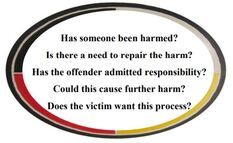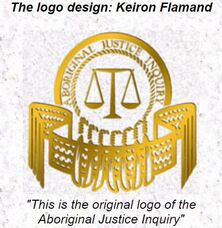Restorative Justice
~~~~~~~~~~~~~~~~~~~~~~~~~~~~~~~~~~~~~~~~~~~~~~~~~~~~~~~~~~~~~~~~~~~~~~~~~~~~~~~~~~~~~~~~~~~~~~~~

~~~~~~~~~~~~~~~~~~~~~~~~~~~~~~~~~~~~~~~~~~~~~~~~~~~~~~~~~~~~~~~~~~~~~~~~~~~~~~~~~~~~~~~~~~~~~~~~
Edmund Metatawabin, Up Ghost River: A Chief's Journey Through the Turbulent Waters of Native History
“There is no concept of justice in Cree culture. The nearest word is kintohpatatin, which loosely translates to "you've been listened to." But kintohpatatin is richer than justice - really it means you've been listened to by someone compassionate and fair, and your needs will be taken seriously.”
“There is no concept of justice in Cree culture. The nearest word is kintohpatatin, which loosely translates to "you've been listened to." But kintohpatatin is richer than justice - really it means you've been listened to by someone compassionate and fair, and your needs will be taken seriously.”
~~~~~~~~~~~~~~~~~~~~~~~~~~~~~~~~~~~~~~~~~~~~~~~~~~~~~~~~~~~~~~~~~~~~~~~~~~~~~~~~~~~~~~~~~~~~~~~~
63 Sask. L. Rev. 185 (2000)
Restorative Justice and Social Justice: Click this Link - for further reading on this topic
Restorative Justice and Social Justice: Click this Link - for further reading on this topic
~~~~~~~~~~~~~~~~~~~~~~~~~~~~~~~~~~~~~~~~~~~~~~~~~~~~~~~~~~~~~~~~~~~~~~~~~~~~~~~~~~~~~~~~~~~~~~~~
|
RESTORATIVE JUSTICE “MAA-MII-NAH-CHI-KE-WIN” - brochure from the Nishnawbe-Aski Legal Services Corporation |
~~~~~~~~~~~~~~~~~~~~~~~~~~~~~~~~~~~~~~~~~~~~~~~~~~~~~~~~~~~~~~~~~~~~~~~~~~~~~~~~~~~~~~~~~~~~~~~~
~~~~~~~~~~~~~~~~~~~~~~~~~~~~~~~~~~~~~~~~~~~~~~~~~~~~~~~~~~~~~~~~~~~~~~~~~~~~~~~~~~~~~~~~~~~~~~~~
|
Report of the
Aboriginal Justice Inquiry of Manitoba Chapter 2 begins with ... "Aboriginal Concepts of Justice Introduction "When the white man first seen us, when they first said, “Well, there’s something wrong with these people here. They don’t have no religion. They have no judicial system. We have to do something for these people.” I guess that must have been what they thought because they totally screwed up what we already had. They introduced new religion and there was nothing wrong with our old religion... They just didn’t understand it. The same thing with our judicial system. We had that judicial system and the white people, when they came here, they didn’t see that. They said, “These guys have nothing. We have to introduce all these different things to them so they can be one of us.” That’s exactly the problem that we have." Chief Philip Michel Brochet Aboriginal peoples have always had governments, laws and some means of resolving disputes... Aboriginal peoples have persisted for thousands of years as distinct cultural entities.... Although successive federal governments have tried to interfere with or diminish that right, and to replace it with their concepts of "Aboriginal" government, they have done so without much success. More importantly, successive federal governments and religious organizations in Canada have tried to interfere with, and even destroy, the cultures of Aboriginal people and to supplant them with European cultures and values, again without much success. At best, this amounts to discrimination. At worst, it is cultural genocide. The daily, systemic cultural discrimination inflicted upon Aboriginal people by the justice system, however unintentional, demeans and diminishes the importance and relevance of their cultures, languages and beliefs. At the very least, as one Aboriginal language interpreter told our Inquiry, Aboriginal people have a right to understand what is happening to them. ... In this chapter, we discuss Aboriginal and non-Aboriginal concepts of justice, in brief. We discuss how they are similar and how they are different. We try to explain how they work and how their purposes and processes differ. |

